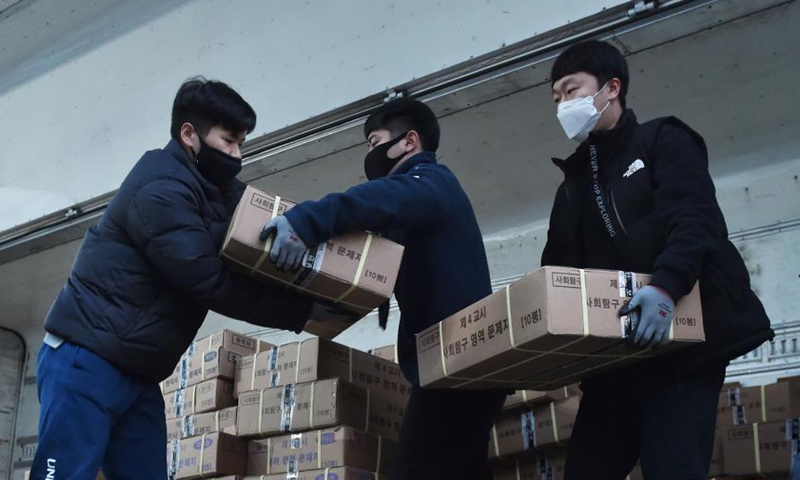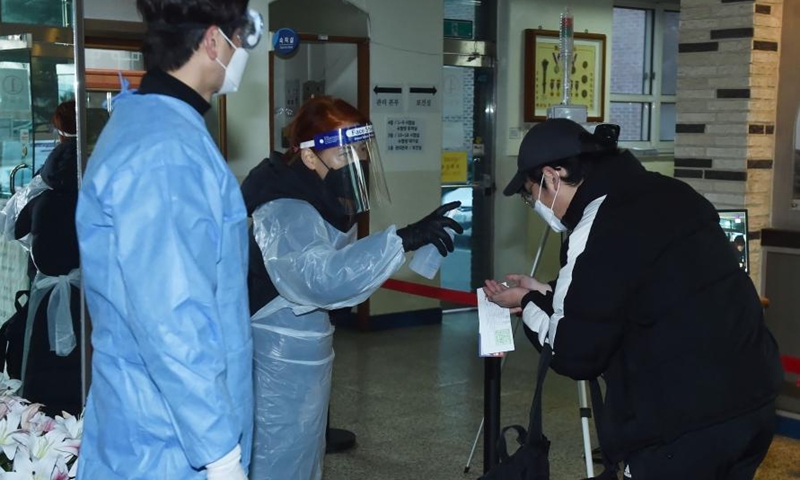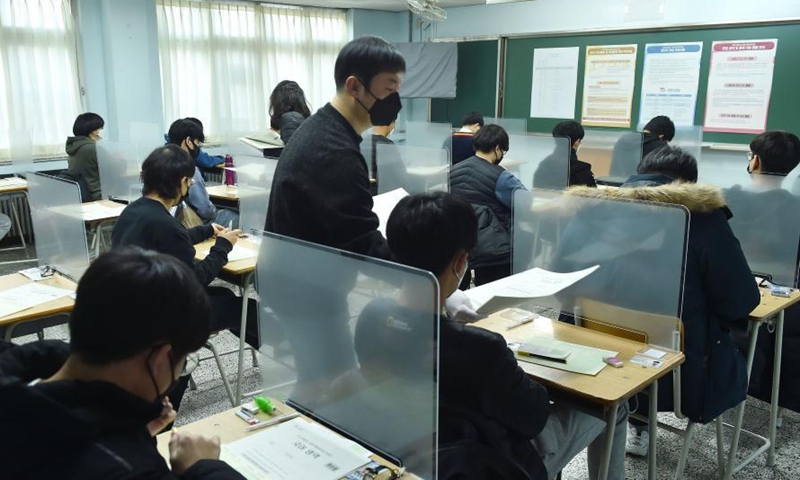Feature: Wearing mask, fewer S. Korean students go for college entrance exam

Staff prepare test paper before the the College Scholastic Ability Test (CSAT) in Seongnam City of Gyeonggi Province, South Korea, Dec. 3, 2020. South Korean students took the annual CSAT on Thursday amid a sharp resurgence of COVID-19 infections across the country. (Photo by Lee Sang-ho/Xinhua)

An examinee gets his hands sanitized before attending the College Scholastic Ability Test (CSAT) in Seongnam City of Gyeonggi Province, South Korea, Dec. 3, 2020. South Korean students took the annual CSAT on Thursday amid a sharp resurgence of COVID-19 infections across the country. (Photo by Lee Sang-ho/Xinhua)

Invigilators hand out test paper to examinees attending the College Scholastic Ability Test (CSAT) in Seongnam City of Gyeonggi Province, South Korea, Dec. 3, 2020. South Korean students took the annual CSAT on Thursday amid a sharp resurgence of COVID-19 infections across the country. (Photo by Lee Sang-ho/Xinhua)
A lower number of South Korean students went for a delayed college entrance exam on Thursday, wearing mask amid the COVID-19 resurgence here for the past month.
On the freezing cold day, students dressed in thick winter jackets entered the school gate to take the annual College Scholastic Ability Test (CSAT) that would last for nine hours from 8:40 a.m. local time.
Some were carrying thermos, and others were holding blankets in their arms to keep warm during the exam. Without exception, all students put on masks as well as families and relatives who came together to see off the students.
Usually, a festive scene tends to be found in front of test sites as schoolmates cheer up the spirits of the test-takers, but the atmosphere was relatively calm and serene this year amid the COVID-19 resurgence here.
The CSAT has been delayed by two weeks as the school reopening was postponed because of the COVID-19 outbreak.
The number of high school students and graduates, who registered the exam, was 493,433 this year, down 55,301, or 10.1 percent, from the previous year. It was the lowest since the CSAT was introduced in 1994.
The rate of absence from the exam was estimated to be higher this year as lots of students may give up taking the test on worry about the virus infection, especially among those who applied for special admission to university that requires no CSAT score.
Despite the record-low applicants, the number of test sites nationwide was 1,383 this year, up 198 compared to the previous year as the government tightened social-distancing guidelines amid the COVID-19 resurgence for the past month.
In the latest tally, South Korea reported 540 more cases of COVID-19 for the past 24 hours, raising the total number of infections to 35,703. The daily caseload grew in triple digits for 26 days running, staying above 500 for two days.
The number of CSAT applicants who tested positive for the COVID-19 was 37 as of Tuesday, with 430 more students being under self-quarantine. The students were required to take the test at hospitals or residential treatment facilities.
All the test-takers were required to wear mask during the test and were required to check body temperature before entering test rooms. Students showing symptoms, such as fever and cough, had to take the exam at separate classrooms.
The maximum number of students per test room was reduced from 28 to 24 to distance students away from each other, while a plastic partition was set up on the front side of each desk.
During a break, students were required to refrain from gathering together or having a chat, while test rooms should be ventilated each time a test is done.
The CSAT consists of five sections: Korean language; mathematics; English; Korean history and the social and natural sciences; and the second foreign language and the Chinese character.